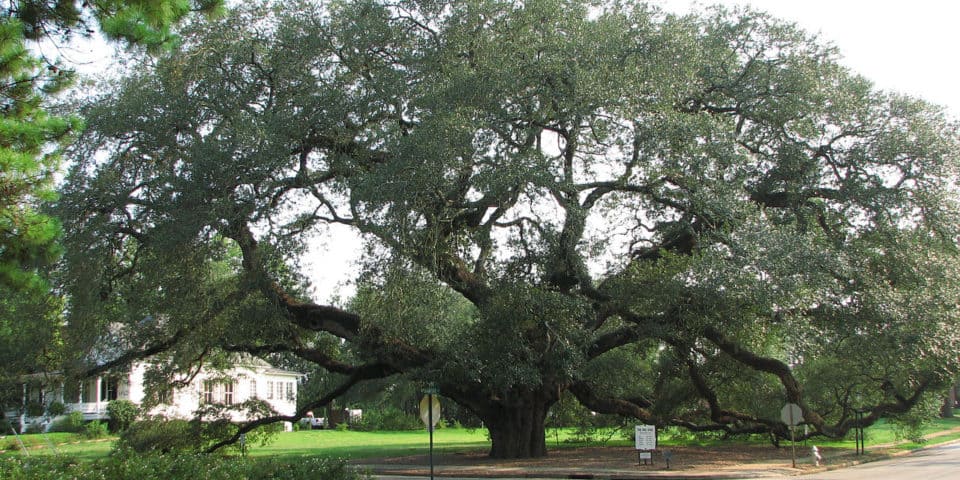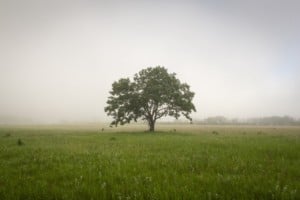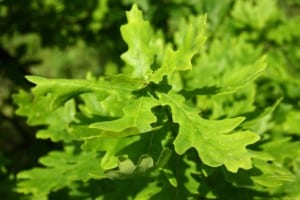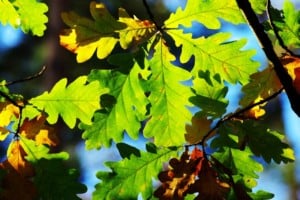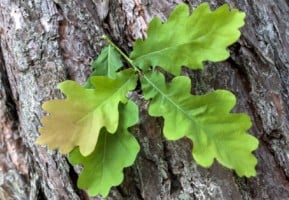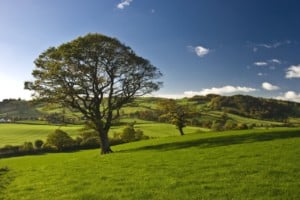That states like Georgia have a lot of trees should be no surprise to anyone. Because of its mild climate, Georgia is home to dozens of species of trees, including the hickory, oak, mulberry, magnolia, bayberry, and maple, among others. In fact, with 67% of the state covered in forests, if trees are what you love, you’ll find no shortage of them in the state of Georgia.
Contents
- 1. Black Oak (quercus velutina)
- 2. Blackjack Oak (quercus marilandica)
- 3. Cherrybark Oak (quercus pagoda)
- 4. Chestnut Oak (quercus michauxii)
- 5. Chinkapin Oak (quercus Muehlenbergii)
- 6. Darlington Oak (quercus hemisphaerica)
- 7. Live Oak (quercus virginiana)
- 8. Nuttall Oak (quercus texana)
- 9. Overcup Oak (quercus lyrata)
- 10. Pin Oak (quercus palustris)
- 11. Post Oak (quercus stellata)
- 12. Scarlet Oak (quercus coccinea)
- 13. Shumard Oak (quercus shumardii)
- 14. Southern Red Oak (quercus falcata)
- 15. Swamp Laurel Oak (quercus laurifolia)
- 16. Water Oak (quercus nigra)
- 17. Willow Oak (quercus phellos)
Georgia consists of nearly 25 million acres of forests, and there are a total of 17 different oak trees for people to enjoy. The live oak, among others, is a cultural symbol in deep-south states such as Georgia, and the fact that oak trees dot much of the state’s landscape is just one of the reasons why it is so beautiful there.
Oddly enough, oak trees are actually part of the beech family. There are 90 species of oak trees found in North America, and the nut of the tree is an acorn, which is usually covered in a cup-like structure. The tannic acid contained in oak trees protects it from insects and even fungi, and the trees are known to hybridize with other trees, particularly in the white oak group.
The following 17 oak trees are the types found in the state of Georgia.
1. Black Oak (quercus velutina)
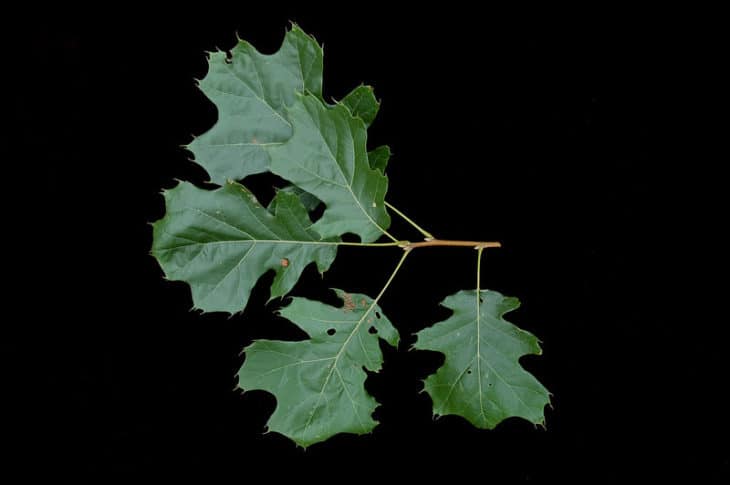
Black oak trees can get up to 82 feet height and can be 35 inches in diameter. When compared to other oak trees, this is considered a small tree. Black oaks hybridize with about a dozen other tree types, and on rare occasions it can get up to 180 feet tall. The leaves are shiny green on top and a yellowish-brown color underneath, and they are four to eight inches in length.
2. Blackjack Oak (quercus marilandica)
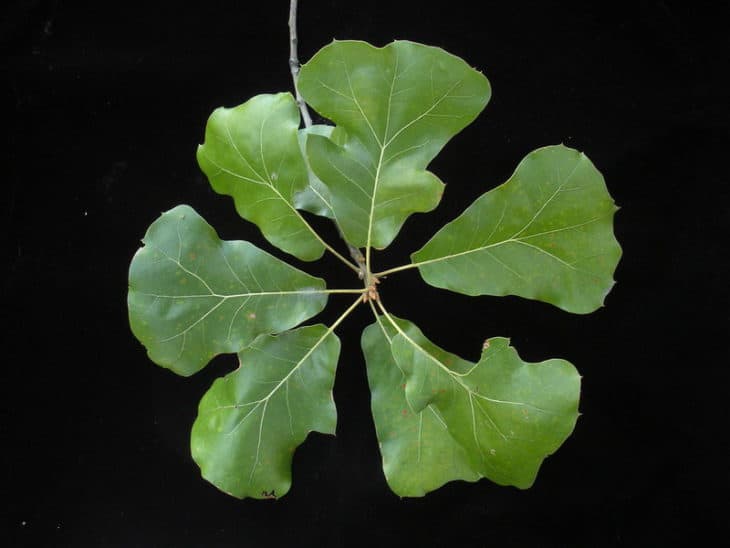
This is a small oak tree that can be found not just in the southeastern part of the country, but also as far west as Oklahoma, Texas, and Nebraska. They grow to roughly 50 feet in height and have broad leaves that are three to eight inches long. They also have leaves that range from red to brown in the fall, as well as small acorns that usually take 18 months or so to mature. The blackjack oak is often used for wood-burning stoves and bar-b-ques.
3. Cherrybark Oak (quercus pagoda)
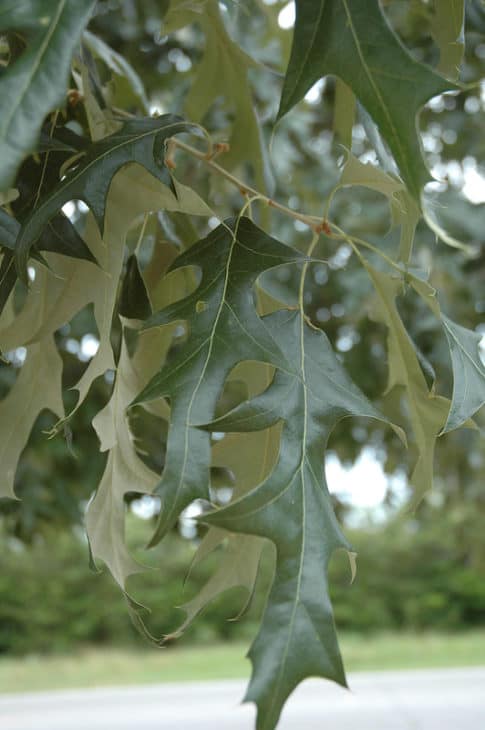
One of the most prized red oaks in the country, the cherrybark oak tree is strong and has a straight form, making it perfect for use as timber. The tree grows from 100 to 130 feet with a trunk that is 35 to 60 inches in diameter, making it one of the hardest and largest oak trees. It gets its name from its bark, which looks like black cherry, and the acorns are roughly half-an-inch in size. They usually start producing acorns after about 25 years.
4. Chestnut Oak (quercus michauxii)
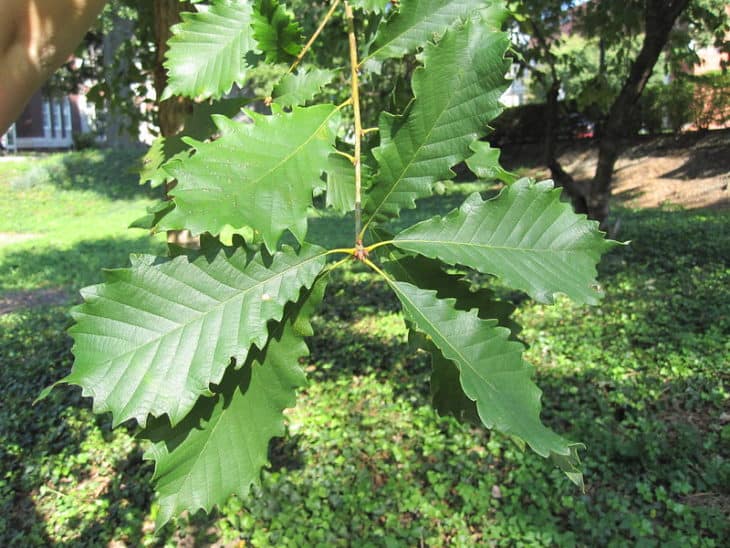
Also called the swamp chestnut oak tree, this tree gets up to roughly 65 feet in height and has leaves that are 4 to 11 inches long and two to seven inches wide. The leaves are a beautiful red color in the fall, and the acorn is rather large at 1.5 inches long. Because of how attractive the chestnut oak tree is, you often see them lining public streets. Occasionally, the trees get up to 150 feet high.
5. Chinkapin Oak (quercus Muehlenbergii)
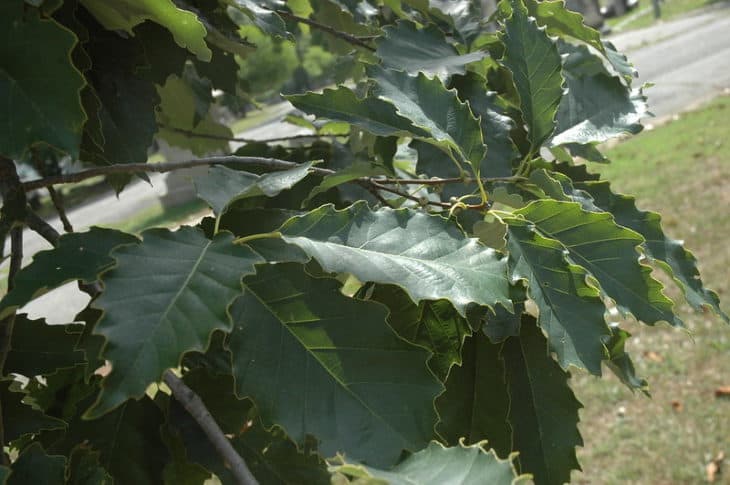
Native to central and eastern North America, the flowers on this tree appear from April to late May/early June and the tree has strong, sturdy wood. The Chinkapin oak tree is part of the white oak group and has wood that is frequently used in various construction projects. The acorns of this tree are eaten by animals such as chipmunks, squirrels, turkey, deer, and all types of birds.
6. Darlington Oak (quercus hemisphaerica)
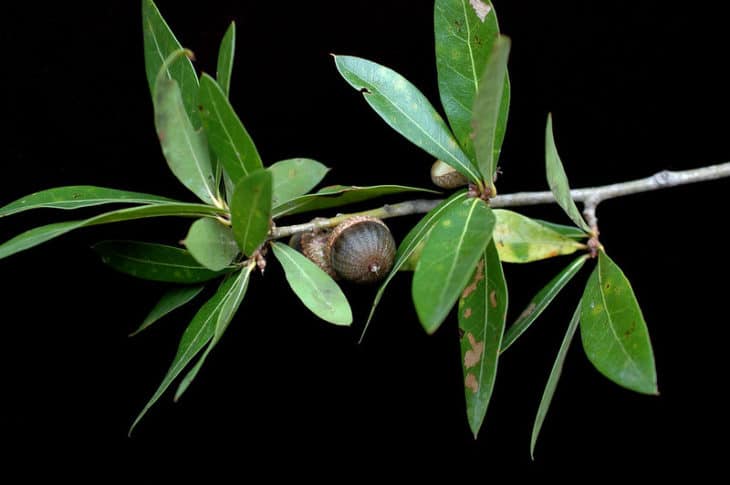
Other names for this oak tree include the sand laurel and laurel leaf oak, and the tree gets to roughly 115 feet high with a trunk that is up to five feet in diameter. It can grow in a variety of conditions, including sand hills, hillsides, and even very sandy soils. It is very similar to the swamp laurel tree and has leaves that are one-and-a-half to nearly five inches in length and an obtuse or rounded base.
7. Live Oak (quercus virginiana)
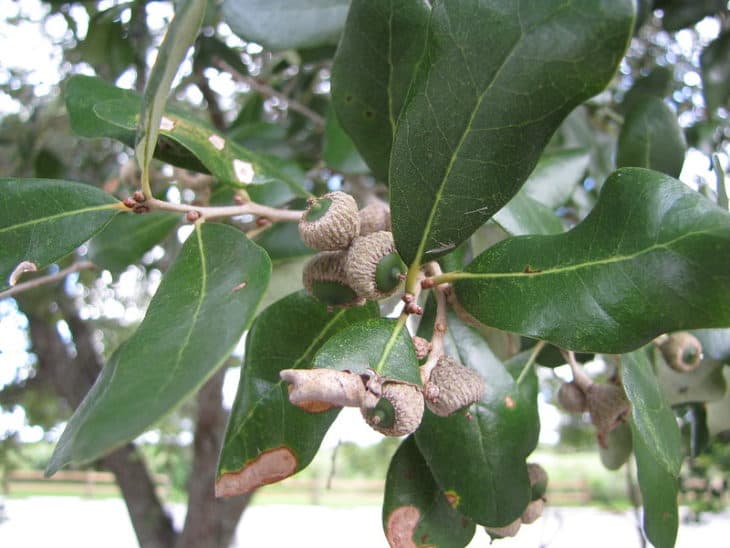
The live oak tree is often called an evergreen oak, and the term “live” comes from the fact that the tree doesn’t go into a dormant stage during the winter months like many other trees do. The wood is mostly used to make various parts of a ship, but its commercial use is limited because of its small size and its low-hanging branches. One variety is called the southern live oak, and naturally, it frequently appears on landscapes in the Deep South.
8. Nuttall Oak (quercus texana)
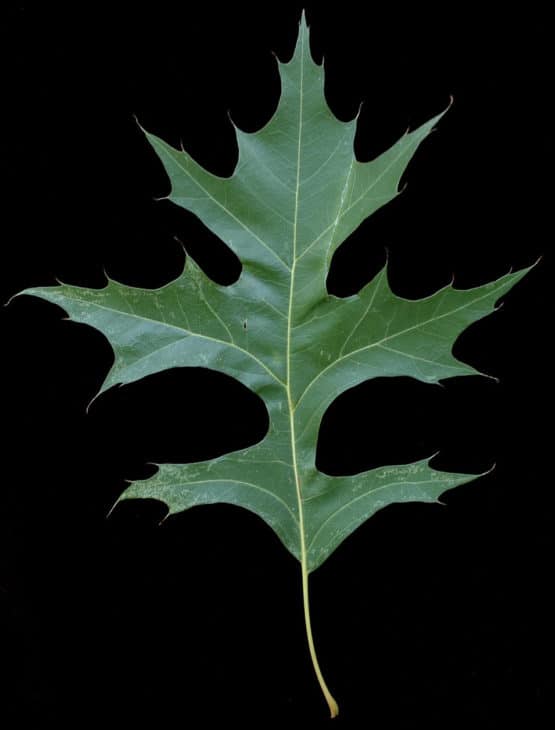
Nuttall oak trees are native to the south-central part of the country and grow to roughly 80 feet in height. It has dark-brown bark and leaves with sharp points, much like other types of oak trees. In the fall, the nuttall oak tree shows off beautiful red leaves, which is why it is sometimes confused with the Texas red oak tree. The tree is also easy to grow because it grows well in a variety of soils, including very wet soils.
9. Overcup Oak (quercus lyrata)
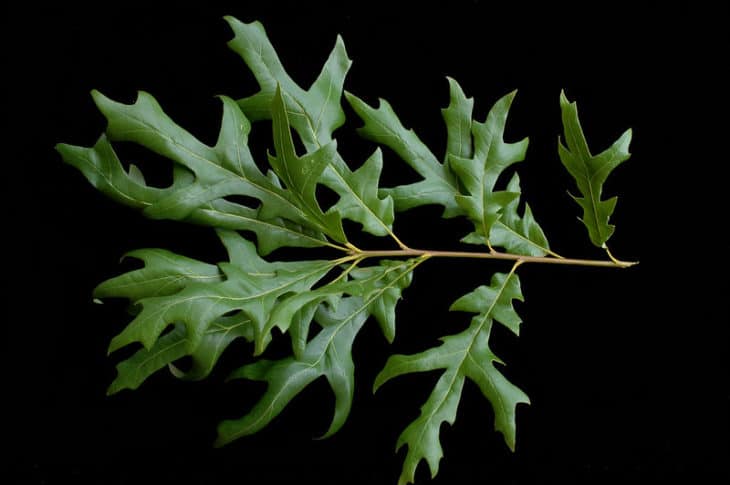
The overcup oak tree is a medium-sized tree, getting up to roughly 65 feet tall. Its leaves are four to six inches long and two to four inches wide, and they are dark-green in color with fine hair-like structures underneath. Because they are often shaped like lyres, the Latin name is quercus lyrata. These trees are native to the lowland areas of the eastern and south-central parts of the country, and the acorns are encased in a cup-like structure, hence the name.
10. Pin Oak (quercus palustris)
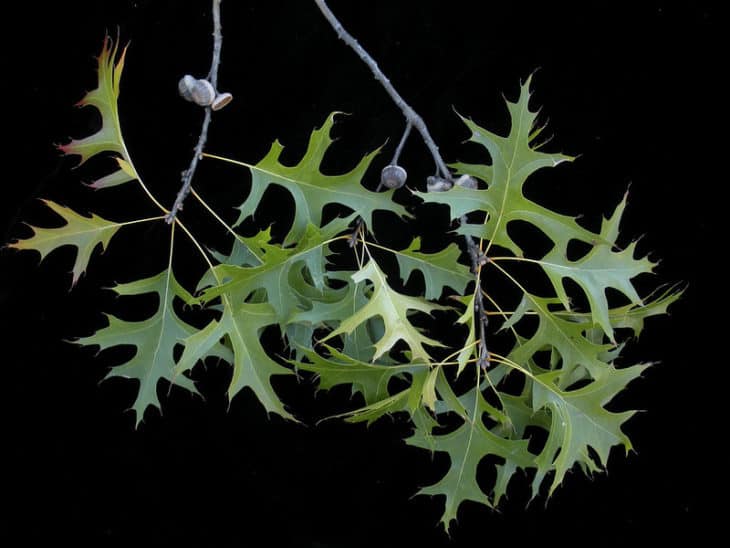
Also called the swamp Spanish oak, the pin oak tree is part of the red oak family and gets up to roughly 70 feet in height. The trunk can get up to 3.3 feet in diameter, and they have a straight trunk, smooth bark, and a spread that looks like a large canopy. Pin oak leaves are two to six inches long and up to five inches wide, and they have either five or seven lobes that each have bristle-tipped teeth.
11. Post Oak (quercus stellata)
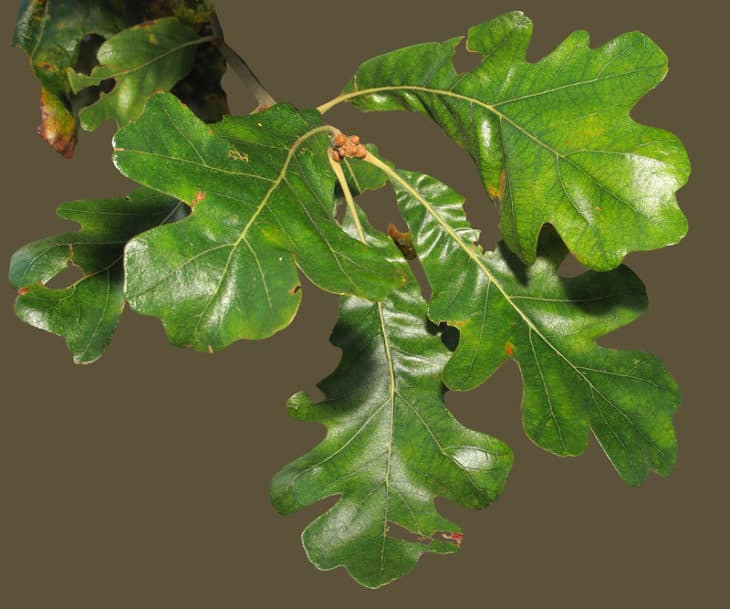
The post oak grows slowly, but does well even in poor soil conditions. It is considered a small tree because it gets no more than 50 feet high. The acorns are also small and they mature during the very first summer. With star-shaped leaves that are leathery to touch, the post oak is also called the iron oak, and some of its uses include flooring and fence posts.
12. Scarlet Oak (quercus coccinea)
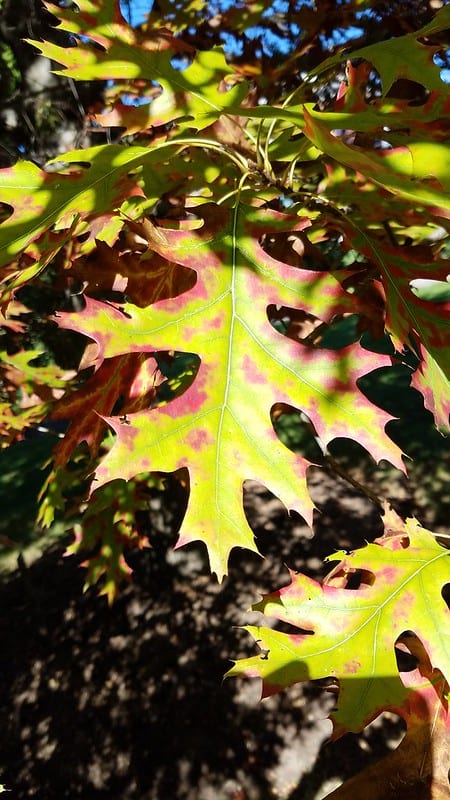
The scarlet oak gets from 65 to 100 feet in height and has an open, very round crown. The glossy green leaves are three to seven inches in length and three to five inches wide, and they usually turn a bright scarlet red in the fall. The ovate-shaped acorns have a cup-like structure encasing them, and they mature 18 months after pollination.
13. Shumard Oak (quercus shumardii)
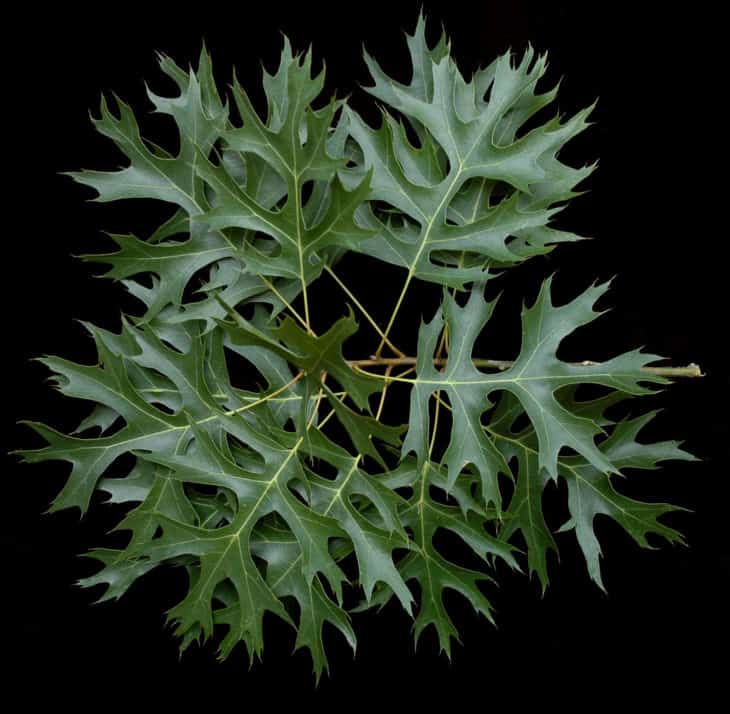
This type of oak tree usually gets to around 115 high and has large acorns that are frequently enjoyed by animals such as deer, waterfowl, and various birds. Its bark is unique in that it is smooth and reflective instead of bumpy. Some Shumard oak trees have grown up to 200 feet high, but the average size is much lower.
14. Southern Red Oak (quercus falcata)
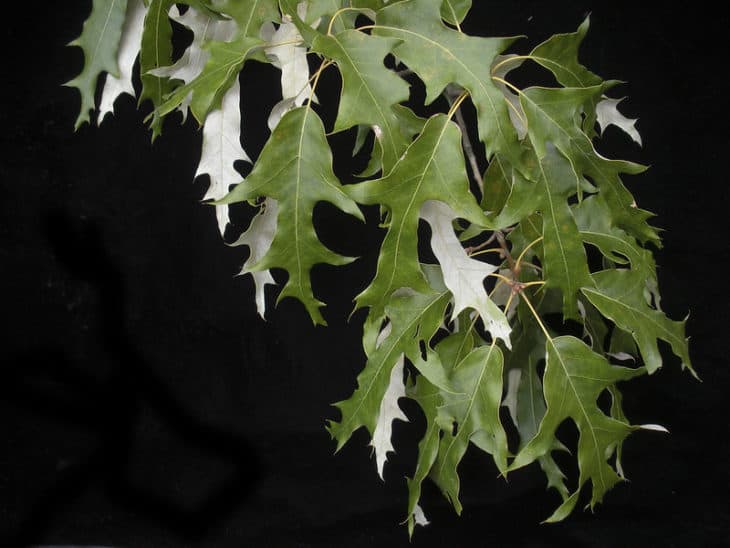
Also called the Spanish oak, this oak is part of the red oak group and usually gets to around 80 to 100 feet high. Its trunk can get up to five feet in diameter, and the leaves can get up to 12 inches long and six inches wide. The acorn is small, only around half-an-inch in length, and it is encased in a cup-like structure for one-third to one-half of its size.
15. Swamp Laurel Oak (quercus laurifolia)
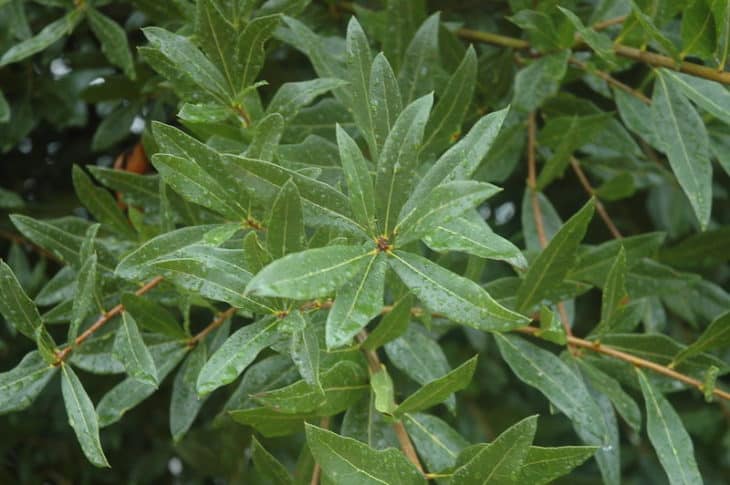
Also known as the water leaf oak or the obtusa oak, the swamp laurel oak is a medium-sized tree that gets to 65 to 80 feet high and has leaves that are one to five inches long. The tree is most often used as either an ornamental or decorative tree or as pulpwood. Its acorns are a food source for animals such as raccoons, wild turkeys, and small birds, to name a few.
16. Water Oak (quercus nigra)
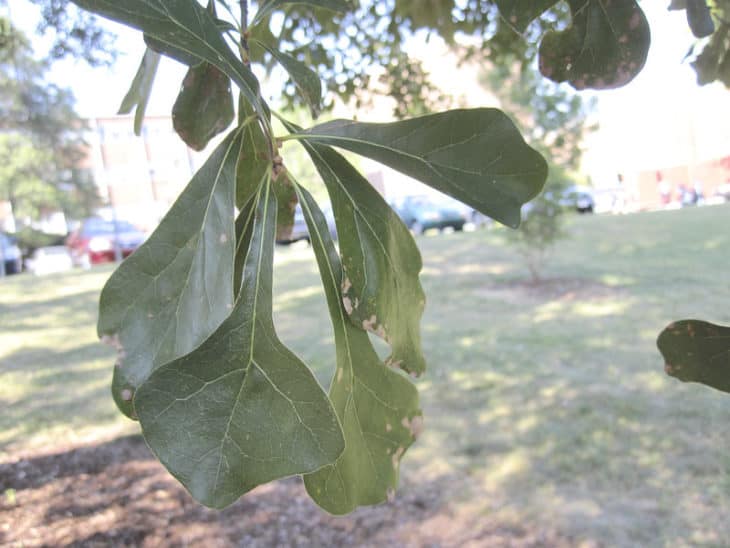
The water oak tree gets up to roughly 100 feet high, making it a medium-sized tree. The trunk can be as big as three feet in diameter, and the leaves grow in a variety of shapes. The leaves are a beautiful blue-green color and the acorns grow either singly or in pairs. The most popular use for the water oak’s wood is timber and fuel.
17. Willow Oak (quercus phellos)
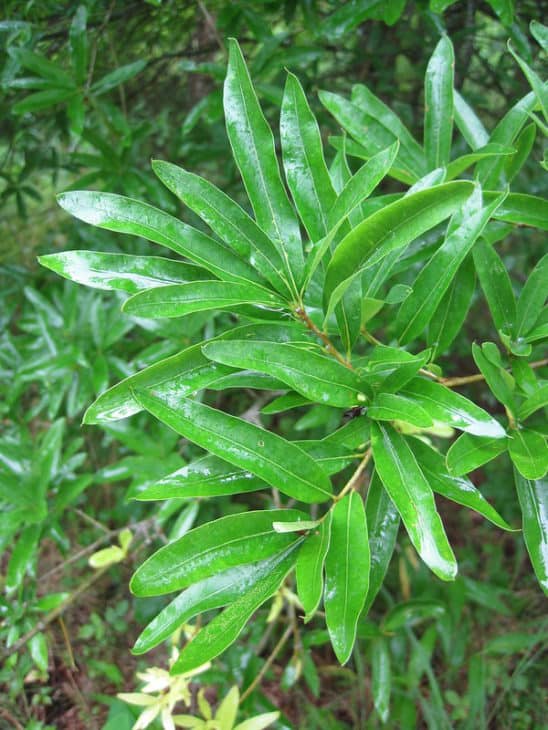
Getting 65 to 100 feet tall, the willow oak is part of the red oak group, and its trunk can get up to 60 feet in diameter. The five-inch long leaves look similar to the leaves of the willow tree, and the small acorns are very popular indeed with animals that include squirrels and a lot of other wildlife. It is also a fast-growing tree that can grow up to two feet every year.

